Changes in the Central Committee

Ri Pyong Chol (Ri Pyo’ng-ch’o’l) returned to North Korean public life, following a ten-month absence. Going back to 2014, Ri was the leading official in the country’s missile and WMD development and production. To that effect, he held a series of successive leadership positions in the DPRK defense industry and wider national security community. His career advancement culminated during 2020 when he was given the title of KPA Marshal, Vice Chairman of the Central Military Commission [CMC] and joined the Workers’ Party of Korea [WPK] Political Bureau Standing Committee (presidium). Ri retained these various political offices following the 8th Party Congress. In June 2021, Ri was tossed out of office during a Political Bureau meeting where senior officials were upbraided for “extreme negligence and deliberate idleness” which contributed to “a crucial case of creating a great crisis in ensuring the security of the state and safety of the people.”
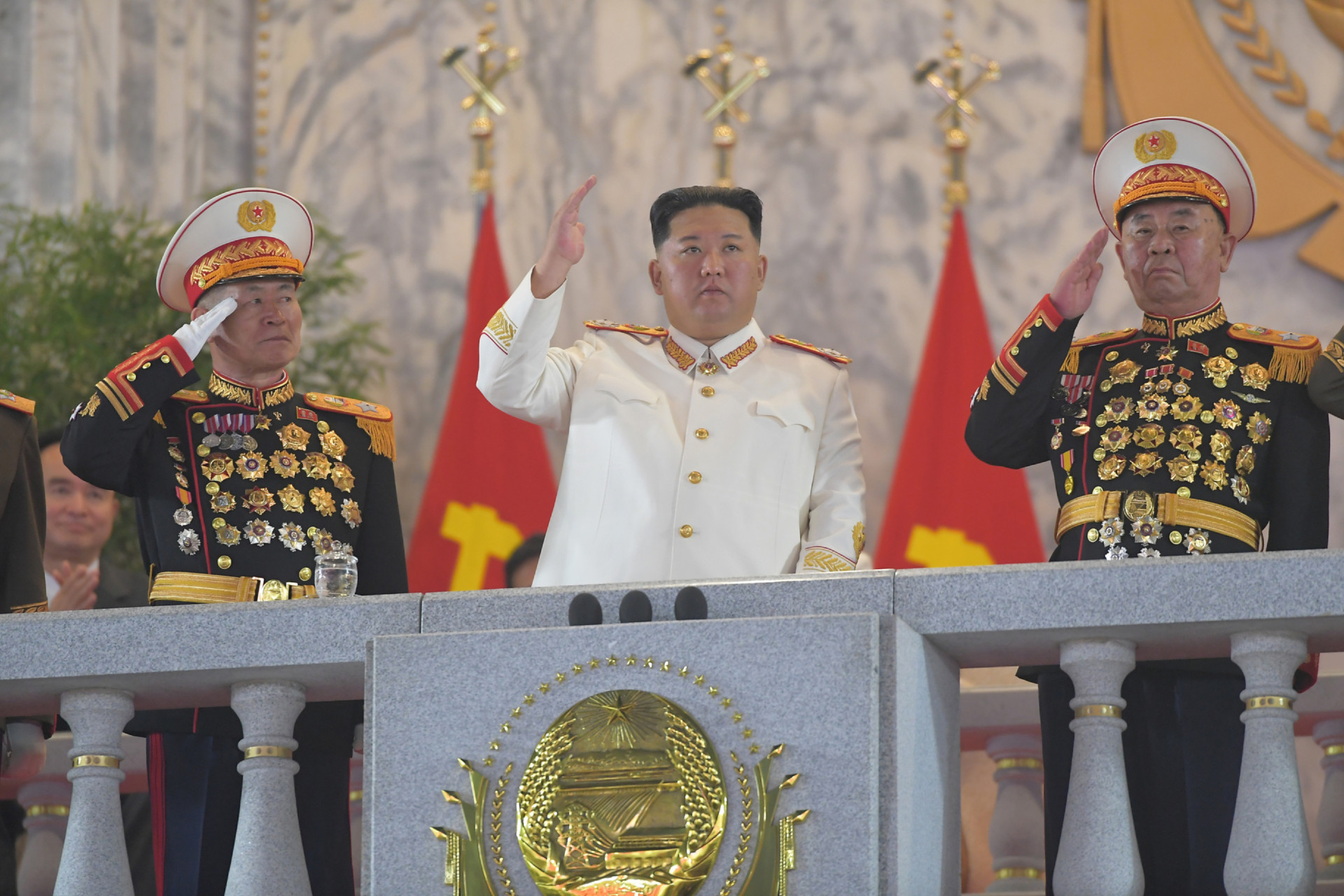
Ri’s return occurred during the 25 April (Monday) parade which commemorated the 90th anniversary of the foundation of the Korean People’s Revolutionary Army. On the parade review platform, Ri joined the man who replaced him, Pak Jong Chon (Pak Cho’ng-cho’n). Pak himself had been away from the public view since January 2022.
In an interesting circumstance, Ri Pyong Chol and Pak Jong Chon both currently have the title of WPK Secretary, making them members of the Central Committee Secretariat, and are both members of the Political Bureau Standing Committee (presidium). This brings the total Standing Committee membership up to six (6). Pak Jong Chon, however, has been identified as CMC Vice Chairman meaning that Pak retains a political office he assumed from Ri.
Pak’s absence from the public aspects of DPRK political culture was over two months. This is roughly the same amount of time of Higher Party School courses which DPRK elites undergo when they are between jobs. And yet, Pak seemingly has the same job and political offices he held prior to going to ground. During the 25 April parade, he performed the formal review and presentation of the Korean People’s Army [KPA] participants. It was also Pak Jong Chon, not Ri Pyong Chol, who attended a commemorative, studio photo-op with KPA commanders on 28 April. Pak’s disappearance from public view occurred around the same time as construction resumed at the P’unggye-ri Nuclear Test Site. So, Pak may not have been sent packing to the Higher Party School after all.
The placement of Ri Pyong Chol and Pak Jong Chon on both the Secretariat and the Political Bureau Standing Committee has been interpreted by ROK Pyongyang watchers under the principle of “personnel as policy.” With KJU’s speech, other forms of strategic rhetoric (like Kim Yo Jong communique) and ongoing test activity, two dedicated natsec and/or defense industry officials on two of the party’s top power organizations might be viewed as a literal doubling of efforts. According to a post-parade research note, Pak and Ri are now divided between military affairs and defense industry.
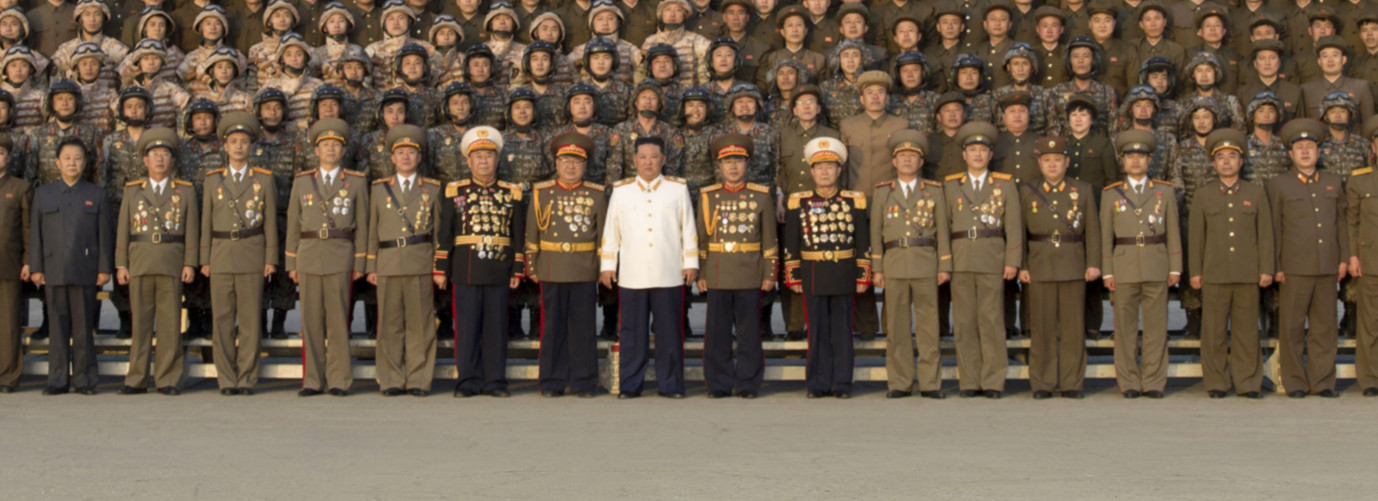
The question, over the short-term is: how will policy and execution work be divided between Pak and Ri? Will it fall along system-based lines whereby one assumes responsibility for conventional weapons and the other for strategic weapons? Will one have a policy writ entirely consumed by the defense industry, while the other will take on military affairs with some involvement in the defense industry? Will one focus on research and development [R&D], and the other on production and deployment? Has the defense industry become the size of a Hwasongpho-17 and requires two executive-level officials to run things? One way we can observe this with some degree of analytical accuracy will be forthcoming test events where DPRK state media identifies the various participants.
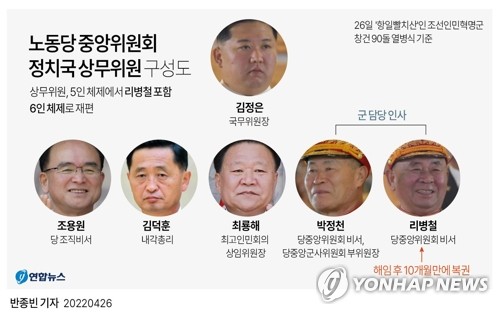
The Ri Pyong Chol-Pak Jong Chon double act is not the only purported change in the Central Committee. Earlier in April, Daily NK [DNK] had a duo of reports which detailed downsizing within the Central Committee apparatus. One indication of a downsizing effort is the assignment of Central Committee cadres to lead the prosecutors’ offices in KPA service branch headquarters (Navy, Air, Strategic Force) and corps units of the KPA’s ground forces. This probably indicates institutional downsizing. On the other hand, this might be part of a planned effort which began with last year’s establishment of the WPK Justice Department. There might be a group of seasoned cadres being turned out of that department and sent to KPA units. This is a relatively small population–no more than about 30 cadres–which is a drop in the bucket if the primary reason is downsizing.
DNK also reports** that the Central Committee is merging departments and shedding between 300 and 350 cadres. The report claimed that this reorganization effort was scheduled to occur in time for the 10th anniversary of Kim Jong Un [KJU] assuming the leadership of the party. There has not been any further reporting or additional information about this organizational restructuring either through ROK media sources like DNK, or DPRK state media. As a place where policy is formulated and implemented, the Central Committee Departments are places of actual power and decisionmaking in DPRK politics. Changes to their organizational structure and personnel (even rumint) are significant developments.
According to the DNK report, at least two of the Central Committee’s 20-odd departments were ordered to consolidate. As a result of this restructuring, about 300 cadres—who are middle managers within these departments—will migrate out of the Central Committee to lower-level party organizations in Pyongyang (i.e., city district, or kuyo’k, committees, dong committees, etc.) or production units that are directly subordinate to the WPK and/or Central Committee.
The consolidation of Central Committee Departments is a change which Pyongyang watchers will be able to notice over the short term. It might be indirectly disclosed in state media, such as when a director or deputy director of a department is identified attending a state event or contributes an essay to Rodong or Minju. It might also resurface either in DNK (or a similar media outlet) once the decision (s) is implemented, or it could be the subject of briefings or parliamentary testimony by ROK Government officials.
Based on a number of reasons, the chief of which is past practice in the Central Committee, the departments undergoing consolidation are probably related to economic policy, or managing party funds and economic activity. Going back to the establishment of the WPK Planning and Finance Department in 2005 (see appended chronology), all but two consolidations of Central Committee Departments took place in economic policy-focused departments or the party funds departments. In 2005, the WPK Economic Affairs Department [EAD], the WPK Agriculture Department and the Economic Policy Inspection Department merged to form the WPK Planning and Finance Department. This department was gradually disbanded, first with the reversion to the WPK Economic Affairs Department in 2014, followed by the revival of the WPK Agriculture Department in 2016. Office #39, which manages party funds and the related economic activity, merged with Office #38 from 2008-2010 and then between 2015 and 2016.
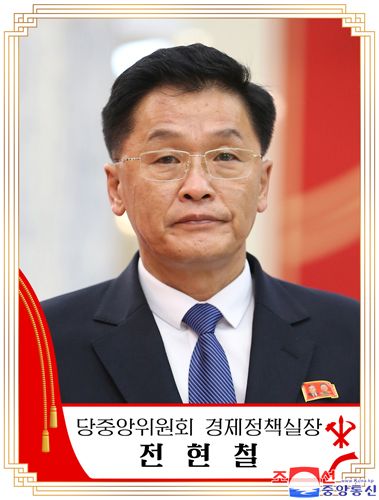
The most likely scenario is that the Economic Policy Inspection Department has merged with the EAD. In January 2021, Jon Hyon Chol was appointed DPRK Vice Premier and identified in state media as head of something called the WPK “Economic Policy Office.” Jon has retained his slot in the DPRK Cabinet, but there has been no further mention of the Economic Policy Office. The EAD attracted negative attention following the end of the 8th Party Congress in January 2021. A little under a month after the party congress closed, the newly-appointed EAD Director, Kim Tu Il, was publicly removed from office for lack of compliance with Central Committee’s (and KJU’s) policy directive. Kim was replaced by WPK Secretary O Su Yong. O had served as EAD Director beginning in 2014 and had moved on to Chairman of the Second Economic Committee. O is certainly influential as a policymaker and KJU advisor.
One of the reasons cited for merging departments in the DNK report is the high degree of redundancy in submitting official reports. When looking at all of the Central Committee Departments, these are the two departments whose responsibilities overlap (the Economic Policy Inspection Department essentially backstops EAD’s oversight of macroeconomic policy) and where redundant upline reporting would exist. The WPK Secretariat has bifurcated positions in which WPK Secretaries interact, and might possibly supervise, more than one Central Committee Department. Reports from the EAD and Economic Policy Inspection Department, in this dynamic, are submitted to O Su Yong. The Economic Policy Inspection Department has twice merged into larger economic policy departments, in 2005 (as mentioned above) and during the mid-1990s.
A wild, yet probable, scenario might involve elements of Office #39 merging into the WPK Light Industry Department [LID]. As noted above, Office #38 merged with Office #39 twice in less than 10 years. Economic production units under Office #38 (under the auspices of the Rakwo’n Guidance Bureau and the Moran Guidance Bureau) are part of, or link with, those under the LID. Office #39 also links with LID production units, but LID is a modest portion of Office #39’s more diverse production and trade activity. Among these economic production units and these departments, one is also likely to encounter redundant reporting practices.
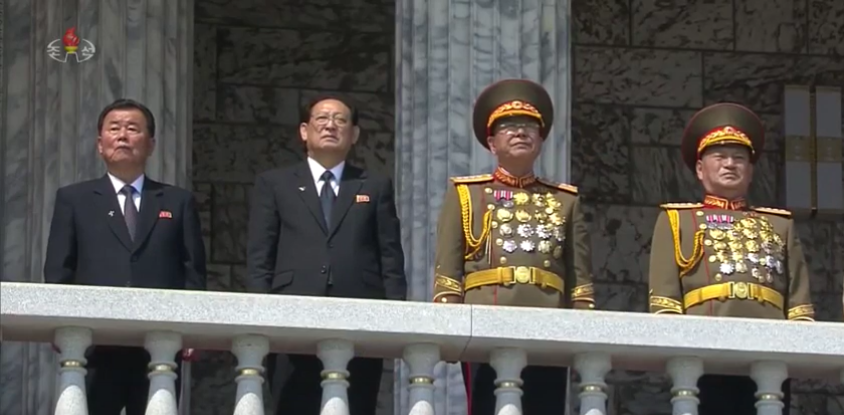
The WPK Agriculture Department might have migrated back to the EAD, but this seems unlikely. Agricultural and food production policies promulgated during the 8th Party Congress were probably predicated on the continued existence of the party Agricultural Department. It is also unlikely that the Agricultural Commission, a national level industry guidance commission, would not have not have been established during early 2022 without a dedicated Central Committee Department underpinning it.
Another possible, but unlikely merger may have occurred between the Central Committee’s two administrative technical services departments, the WPK General Affairs Department [GAD] and the WPK Document Archives. From a cosmetic perspective, this would be an easy merger because document and records collections are part of GAD’s overall mission which is managing communications and document delivery (along with other administrative and technical services) in the Central Party. That said, GAD and Document Archives link directly with KJU’s Personal Secretariat. Personnel, particularly individuals ranked as cadres, working in the Document Archives interact with and have access to wads of sensitive information about the party and party members. If 300-350 cadres are being transferred out of the Central Committee apparatus, it is highly improbable they would be individuals who know the party’s secrets or, in the case of GAD cadres, those who know the mechanics of the Central Committee’s nodes of reporting and control.
Merging Central Committee Departments bucks the organizational trend against consolidation which began at the 8th Party Congress. During the party congress, at least two new Central Committee Departments (the Justice Department and the Discipline Investigation Department) were established. They are spin-offs of the WPK Organization Guidance Department [OGD] and were created in concert with structural changes to the WPK Central Auditing Commission and the WPK Central Inspection (Control) Commission. It is highly unlikely, given the size and bureaucratic reach, that KJU or the core leadership would undo these changes so quickly. In a series of basic intelligence materials distributed by the ROK Ministry of Unification [MOU] in early 2022, the Central Committee also has an Arts and Culture Department. This would represent another bureaucratic spinoff from the WPK Propaganda and Agitation Department [PAD]. So, the trend in building and maintaining the Party Central Committee’s institutions has been away from merger and consolidation. When assessing these more forward-facing departments, the only probable merger would be if the Arts and Culture Department reverted back to PAD as a subordinate section.
Aside from an overall tightening of control, there are three reasons cited for this organizational and personnel change. As mentioned above, one motivation for this reorganization effort is redundancy in the number of reports being submitted. The most salient reason in the estimation of DNK’s source (and the report’s author) is that the Central Party Supply does not have enough food and household resources to ladle out to mediocre cadres. As such, hundreds of cadres who have “done little, but protect their positions for the last ten years” will be moved to other party secretary positions at locales which have dedicated food and household supplies, but are not part of the Central Party Supply distribution network. The second reason is that at a later point in 2022 the county and city party organizations (i.e., county and city WPK committees) will be restructured which might open up vacant positions for former (and migrated) Central Committee cadres.
With these stated reasons, there are other effects of this reorganization and personnel shuffle. Cadres transferred from the Central Committee to lower-level posts might be replacing incompetent or inexperienced party secretaries. This would represent a culling of the herd. In early 2020, there was a major scandal involving cadres’ training institutions which was the subject of a Political Bureau meeting. Cadres’ training institutions not only educate and train the WPK’s political managers, but are also involved (in coordination with the WPK Organization Guidance Department and the WPK Cadres’ Affairs Department) placing them in jobs. This personnel shuffle might be the result of a process that began two years ago.
Conversely, it could create a generational change effect in the ranks of the party’s middle management. Officials who were in Central Committee cadres’ position “in the last ten years,” are closer to retirement or promotion. If a population like this migrates from the Central Committee, would this eventually result in this older cohort staying in the lower-level secretary’s positions? At some point in the future, perhaps with the convocation of the 9th Party Congress in 2026, will 300-350 cadres’ positions be newly created (or repurposed)? Who will fill those positions? Perhaps, a younger generation of cadres.
Chronology of Central Committee Department Changes (2005-2022)
2005: WPK Finance and Planning Department created. It consolidates the WPK Agricultural Department, the WPK Economic Affairs Department and the Economic Policy Inspection Department.
2007: WPK Administration Department is spun off from the WPK Organization Guidance Department
2008: Office #38 merges with Office #39
2009: The WPK External Liaison Department and the WPK Operations Department migrate out of the Central Committee with the establishment of the Reconnaissance General Bureau under the KPA General Staff Department
2010: Office #38 is separated from Office #39
2013: The WPK Administration Department is decommissioned and its functions revert to the WPK Organization Guidance Department
2014: The WPK Economic Affairs Department is separated from the WPK Finance and Planning Department
2016: Office #38 merges with Office #39
2016: The WPK Agriculture Department and the Economic Policy Inspection Department are re-established as stand-alone institutions
2021: 8th Party Congress stands up the Justice Department (procurators) and Discipline Investigation Department
**this report is included and analyzed with the usual caveats about any single-source news items, the overall reliability of human sources and what information they have access to, blah, blah, yadda, yadda**
View Original Article